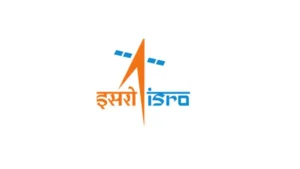The Indian Space Research Organisation (ISRO) marked the beginning of 2024 with a significant milestone, launching its first mission of the year. On January 1, ISRO successfully lifted off the XPoSat (X-ray Polarimeter Satellite) along with 10 other satellites from the Sriharikota spaceport, using the reliable PSLV-C58 rocket.
This groundbreaking mission marks India’s foray into space-based polarisation measurements of X-ray emissions from celestial sources, with a specific focus on the enigmatic world of black holes.
Purpose of XPoSat
The primary objective of XPoSat is to investigate the polarization of intense X-ray sources in space. Astrophysicist Dr. RC Kapoor, commenting on the launch, emphasized that XPoSat is India’s maiden X-Ray satellite designed for detecting X-rays emanating from exotic objects such as neutron stars and black holes.
ISRO’s PSLV-C58 Mission
The PSLV-C58 Mission is pivotal in propelling the XPoSat Satellite into an eastward low inclination orbit. Following the injection of XPoSat, the PS4 stage will undergo two re-starts to reduce the orbit into a 350 km circular orbit. This adjustment aims to maintain the satellite in a 3-axis stabilized mode, facilitating Orbital Platform (OP) experiments, according to ISRO.
PSLV Orbital Experimental Module-3 (POEM-3) Experiment
An integral part of the mission is the PSLV Orbital Experimental Module-3 (POEM-3) experiment. This experiment is poised to achieve the objectives of 10 identified payloads, provided by both ISRO and IN-SPACe (Indian National Space Promotion and Authorization Centre).
Scientific Payloads on XPoSat
The spacecraft of XPoSat hosts two crucial scientific payloads within a low earth orbit. The first of these, POLIX (Polarimeter Instrument in X-rays), is designed to measure polarimetry parameters, including the degree and angle of polarization. This will be conducted in the medium X-ray energy range of 8-30 keV photons, originating from astronomical sources. The second payload, XSPECT (X-ray Spectroscopy and Timing), is focused on providing spectroscopic information within the energy range of 0.8-15 keV.
ISRO’s Vision for XPoSat
ISRO’s XPoSat mission represents a pioneering effort in space-based polarisation measurements of X-ray emissions. The agency underscores the significance of XPoSat as its first dedicated scientific satellite designed to undertake research in this specialized domain. With a specific focus on exploring the polarisation of intense X-ray sources, XPoSat is expected to contribute valuable insights into our understanding of celestial objects like never before.
Important Questions Related to Exams
1. What is the primary objective of XPoSat’s mission?
a. Study of black holes
b. Investigation of intense X-ray sources
c. Orbital Platform experiments
2. What is the purpose of the PSLV-C58 Mission in relation to XPoSat?
a. Conducting Orbital Platform experiments
b. Achieving low inclination orbit
c. Launching 10 satellites
3. Which scientific payload on XPoSat measures polarimetry parameters in the medium X-ray energy range?
a. POLIX
b. XSPECT
c. PS4
4. What does ISRO’s XPoSat mission represent in the field of space-based research?
a. Study of black holes
b. First dedicated scientific satellite
c. Exploration of celestial objects
Please provide your answers in the comments section.




 ISRO Launches RESPOND Basket 2025, Calls...
ISRO Launches RESPOND Basket 2025, Calls...
 LVM3-M6 Rocket Set to Launch on December...
LVM3-M6 Rocket Set to Launch on December...
 Michaela Benthaus to Make History as Fir...
Michaela Benthaus to Make History as Fir...







